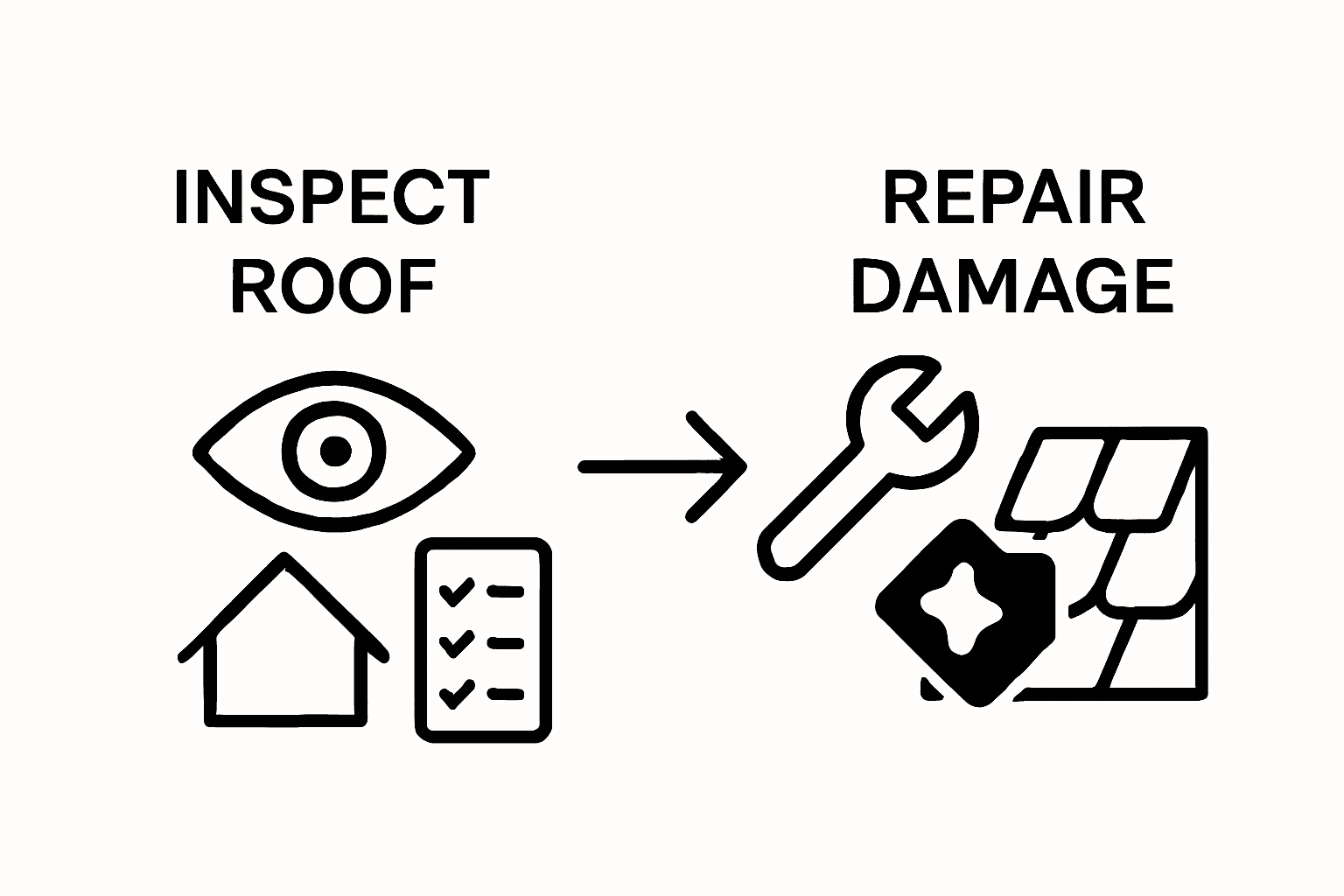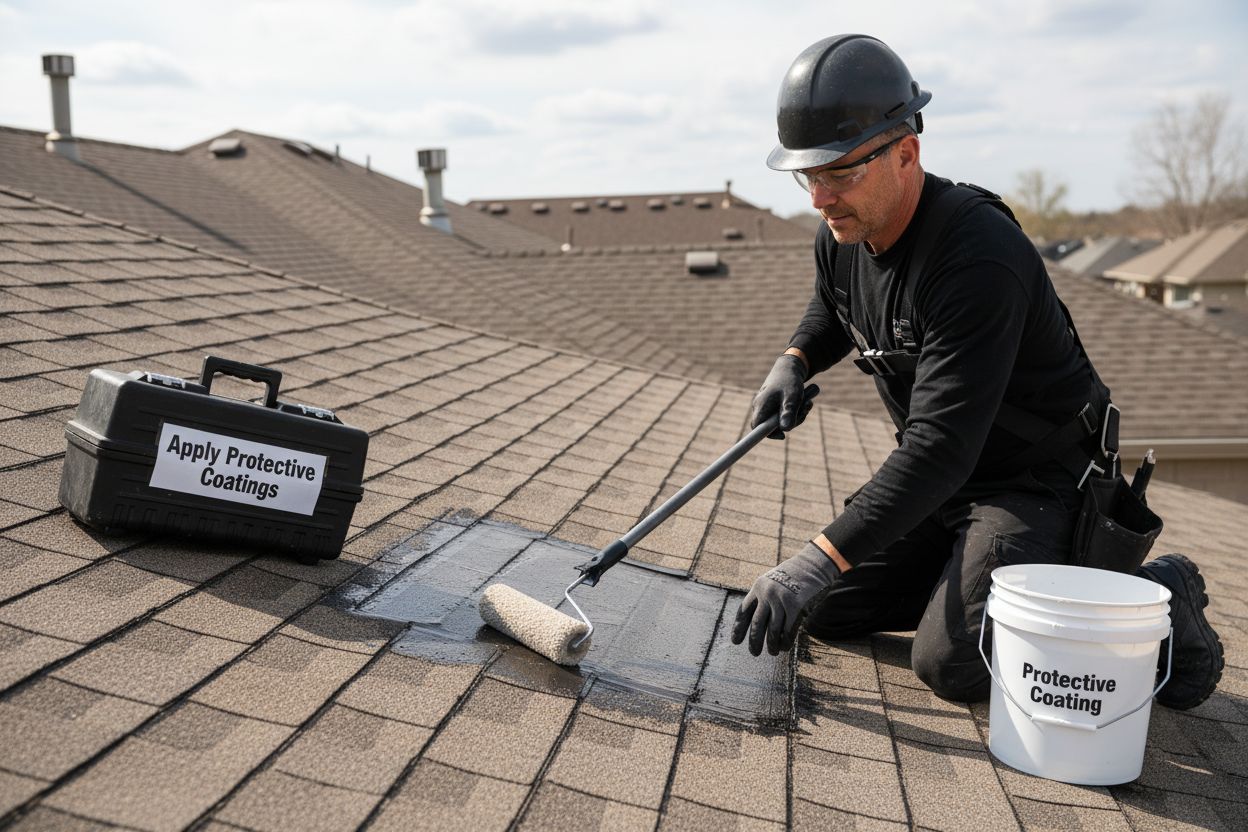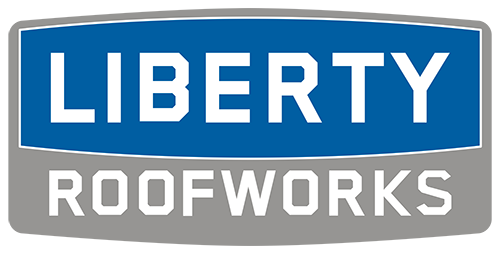A solid roof keeps your home safe and dry. Ignoring small warning signs can lead to massive headaches later. Here is something that surprises most people: routine professional inspections can reveal hidden damage invisible to the naked eye, which can end up saving thousands in repairs. Most homeowners miss this simple step and end up paying the price.
Table of Contents
- Step 1: Inspect The Roof Regularly For Damage
- Step 2: Clean Gutters And Downspouts Thoroughly
- Step 3: Perform Necessary Repairs Promptly
- Step 4: Apply Protective Coatings As Needed
- Step 5: Schedule Professional Inspections Annually
Quick Summary
| Key Point | Explanation |
|---|---|
| 1. Inspect Your Roof Biannually | Conduct roof inspections twice a year to catch issues early, preventing expensive repairs down the line. |
| 2. Clean Gutters Twice Annually | Regularly clean your gutters to prevent water backup and potential damage to your roof’s structure. |
| 3. Address Repairs Immediately | Fix any roof damage as soon as it’s detected to avoid minor issues escalating into major problems. |
| 4. Apply Protective Coatings | Use roof coatings to shield against UV rays and moisture, significantly extending your roof’s lifespan. |
| 5. Schedule Annual Professional Inspections | Get a thorough assessment from professionals each year to ensure your roof remains in prime condition. |
Step 1: Inspect the Roof Regularly for Damage
Regularly inspecting your roof is the foundational strategy for how to extend roof lifespan and prevent costly future repairs. Think of roof inspections like routine medical checkups: early detection can prevent minor issues from becoming catastrophic problems. Homeowners should aim to conduct comprehensive visual roof assessments at least twice annually – ideally during spring and fall when weather conditions are moderate.
Start your roof inspection from the ground level, using binoculars to scan for visible signs of damage without risking personal safety. Look for telltale indicators of potential roof problems such as missing or curling shingles, exposed roof decking, sagging areas, dark streaks, moss growth, or accumulated debris. Pay special attention to roof edges, valleys, and areas around chimneys and vents where water infiltration commonly occurs. These zones are particularly vulnerable and can signal underlying structural weaknesses.
For a more thorough examination, consider scheduling a professional inspection. Our comprehensive roof inspection guide provides detailed insights into what professionals look for during a comprehensive roof assessment. Professional roofers have specialized equipment and trained eyes to detect subtle damage that might escape an untrained observer.
If you choose to inspect the roof yourself, ensure you have proper safety equipment. Use a sturdy ladder, wear non-slip shoes, and never inspect a wet or icy roof surface. When accessing the roof, walk carefully and distribute your weight evenly to avoid causing additional damage. Document any issues you find through photographs, which can help track changes over time and provide valuable evidence if you need to file an insurance claim or schedule repairs.
Key warning signs that demand immediate professional attention include:
- Visible water stains on interior ceilings or walls
- Significant granule loss on asphalt shingles
- Multiple cracked or missing shingles
- Visible sunlight penetrating roof decking
- Extensive moss or algae growth
Remember, a proactive approach to roof maintenance can dramatically extend your roof’s lifespan and protect your home’s overall structural integrity. By dedicating time to regular inspections, you’re investing in long-term protection and potentially saving thousands in unexpected repair costs.
Step 2: Clean Gutters and Downspouts Thoroughly
Cleaning gutters and downspouts is a critical step in how to extend roof lifespan, preventing water damage and protecting your home’s structural integrity. Neglected gutters become breeding grounds for potential roof problems, causing water to back up and potentially seep into your roof’s underlying structures. Most homeowners should plan to clean their gutters at least twice annually – typically in late spring and early fall – to maintain optimal roof health.
To begin the cleaning process, gather essential tools including a sturdy ladder, work gloves, a garden trowel or gutter scoop, a bucket for debris, and a garden hose. Safety is paramount during gutter maintenance. Always have someone spot you while on the ladder, wear non-slip shoes, and avoid overreaching. If your roof has a steep pitch or you’re uncomfortable with heights, consider hiring a professional roofing maintenance service.
Start by removing large debris like leaves, twigs, and accumulated sediment using your trowel or gutter scoop. Work systematically from one end of the gutter to the other, depositing removed material into your bucket. Be thorough but gentle to avoid damaging the gutter’s interior or creating punctures. After manually clearing solid debris, use a garden hose to flush remaining smaller particles and check for proper water flow through downspouts.
Pay special attention to downspout connections and ensure they direct water at least three to four feet away from your home’s foundation. If water pools near your foundation, consider installing downspout extensions or creating a drainage system that redirects water more effectively. Watch for signs of gutter damage during cleaning, such as rust, holes, sagging sections, or loose fasteners, which might indicate the need for repair or replacement.
Key tools and safety equipment for gutter cleaning include:
- Heavy-duty work gloves
- Sturdy extension ladder
- Plastic gutter scoop
- Garden hose with adjustable nozzle
- Bucket for debris collection
- Safety glasses
- Non-slip footwear
After cleaning, perform a final water test by running water through the entire gutter system. Proper drainage should be smooth and consistent, with no overflow or pooling. If you notice persistent drainage issues or significant gutter damage, consult a professional roofing contractor. By maintaining clean gutters, you’re taking a proactive step in protecting your roof and preventing potential water-related structural damage to your home.
Here is a quick-reference checklist of essential tools and safety gear needed for effective and safe gutter and downspout cleaning.
| Tool/Equipment | Purpose | Notes |
|---|---|---|
| Heavy-duty work gloves | Protects hands from debris and sharp edges | Essential for hand safety |
| Sturdy extension ladder | Safely accesses gutters and roof edge | Secure, properly positioned |
| Plastic gutter scoop | Removes leaves, twigs, and buildup | Avoids gutter damage |
| Garden hose with nozzle | Flushes small debris and tests drainage | Adjustable spray preferred |
| Bucket | Collects removed debris | Prevents mess below |
| Safety glasses | Shields eyes from debris | Wear at all times |
| Non-slip footwear | Reduces risk of slipping | Wear on dry days |
Step 3: Perform Necessary Repairs Promptly
Promptly addressing roof damage is crucial in how to extend roof lifespan and prevent minor issues from escalating into expensive catastrophic failures. Small problems like minor leaks, cracked shingles, or exposed flashing can quickly transform into significant structural challenges if left unattended. The key is to treat roof repairs as an immediate priority rather than a future consideration.
When you discover potential damage during your routine inspections, document the issues thoroughly with clear photographs and detailed notes. Timing is critical in roof repair scenarios. Even seemingly insignificant damage can compromise your roof’s protective capabilities, allowing moisture penetration that leads to wood rot, mold growth, and structural weakening. Check out our comprehensive flat roof repair guide for specific insights into identifying and addressing different types of roof damage.
For small repairs that are within a homeowner’s skill range, you might consider temporary solutions like roof sealants or patch kits. However, these are stopgap measures and not permanent fixes. Most roof repairs require professional assessment and intervention. Professional roofers have specialized tools and expertise to diagnose underlying issues that might not be immediately visible to an untrained eye.
Consider the age and current condition of your roof when evaluating repair strategies. Roofs approaching the end of their expected lifespan might benefit more from a complete replacement rather than continuous patchwork repairs. A professional roofing contractor can provide an honest assessment of whether repair or replacement represents the most cost-effective long-term solution.
Key indicators that demand immediate professional repair include:
- Water stains on interior ceilings or walls
- Visible sunlight penetrating roof decking
- Significant granule loss on shingles
- Multiple cracked or missing shingles
- Visible sagging or structural deformation
Before hiring a repair service, request multiple quotes and check contractor credentials. Verify their licensing, insurance, and customer reviews. A reputable roofing professional will provide a detailed inspection report, transparent pricing, and recommendations tailored to your specific roof’s condition. By addressing repairs quickly and professionally, you’re not just fixing current problems but investing in your roof’s long-term durability and your home’s overall structural integrity.
Below is a troubleshooting table outlining common roof problems mentioned, their possible causes, and recommended solutions to guide homeowners on next steps.
| Problem | Possible Cause | Recommended Solution |
|---|---|---|
| Water stains on interior ceilings | Roof leaks, moisture intrusion | Schedule immediate professional repair |
| Significant granule loss on shingles | Aging or weather damage | Inspect for replacement or repairs |
| Cracked or missing shingles | Storm damage or natural wear | Replace affected shingles promptly |
| Visible sunlight through decking | Structural gaps or damage | Seek professional roofing assessment |
| Extensive moss or algae growth | Excess moisture, poor drainage | Clean roof and consider treatments |
| Sagging sections on roof | Structural weakening, water damage | Immediate professional intervention |

Step 4: Apply Protective Coatings as Needed
Applying protective coatings is a strategic approach to how to extend roof lifespan, offering an additional layer of defense against environmental challenges. These specialized treatments act as a shield, protecting your roof from UV radiation, moisture penetration, temperature fluctuations, and potential structural degradation. Our roof coating services can provide professional-grade protection tailored to your specific roofing material.
Selecting the right protective coating depends on multiple factors including your roof’s material, local climate conditions, and existing wear patterns. Acrylic coatings work well for reflective purposes and are ideal for regions with intense sunlight, while silicone-based treatments offer superior water resistance and are excellent for areas prone to heavy rainfall. Some coatings provide additional benefits like thermal regulation, potentially reducing energy costs by reflecting solar heat and maintaining more consistent interior temperatures.
Before applying any protective coating, thorough surface preparation is crucial. Clean the roof surface meticulously, removing dirt, debris, and addressing any existing damage. Minor repairs should be completed first to ensure the coating adheres properly and provides maximum protection. Professional roofers recommend applying coatings during mild weather conditions – typically during spring or early fall – when temperatures are moderate and precipitation is minimal.
According to research from the U.S. Department of Energy, reflective roof coatings can significantly reduce heat absorption, potentially lowering roof surface temperatures by up to 50 degrees Fahrenheit. This temperature reduction not only protects roofing materials but can also contribute to lower cooling costs during summer months.
Key considerations when applying protective roof coatings include:
- Comprehensive roof surface cleaning
- Repairing existing minor damage
- Selecting coating compatible with your roof material
- Checking weather forecast for optimal application conditions
- Ensuring proper application thickness
- Allowing adequate drying and curing time
While some homeowners might consider DIY coating application, professional installation ensures even coverage, proper material selection, and long-lasting protection. A professional roofer can assess your specific roof’s needs, recommend the most appropriate coating, and apply it using specialized equipment that guarantees maximum effectiveness. By investing in protective coatings, you’re essentially adding an extra line of defense that can potentially extend your roof’s functional lifespan by several years.

Step 5: Schedule Professional Inspections Annually
Scheduling annual professional roof inspections is a critical component in how to extend roof lifespan, providing an expert assessment that goes far beyond what typical homeowner inspections can reveal. Professional roofers bring specialized knowledge and sophisticated diagnostic tools that can detect subtle issues potentially missed during routine visual examinations. Our comprehensive maintenance guide offers additional insights into the importance of professional evaluations.
When scheduling a professional roof inspection, timing matters significantly. Plan your annual inspection during moderate weather seasons like spring or early fall, when temperature and moisture conditions allow for thorough, accurate assessments. During these inspections, professional roofers will comprehensively examine your roof’s structural integrity, checking for potential weaknesses in shingles, flashing, underlayment, and overall roof deck condition.
According to the International Association of Certified Home Inspectors, professional inspections help identify early warning signs of potential structural compromises that could lead to expensive repairs if left unaddressed. Trained professionals use advanced techniques like infrared scanning to detect moisture intrusion, thermal imaging to identify potential heat loss areas, and detailed drone photography to assess hard-to-reach roof sections.
Beyond visual assessment, professional inspectors provide detailed documentation of your roof’s condition. These reports typically include high-resolution photographs, precise measurements, and recommendations for maintenance or repair. This documentation serves multiple purposes – it provides a baseline for future comparisons, offers evidence for potential insurance claims, and helps homeowners make informed decisions about roof maintenance and potential replacements.
Key elements professional roof inspectors evaluate include:
- Structural integrity of roofing materials
- Signs of water damage or moisture penetration
- Condition of flashing and seal points
- Potential areas of future structural weakness
- Effectiveness of previous repairs
- Overall roof system performance
While professional inspections represent an investment, they are significantly more cost-effective than addressing major roof failures. Most reputable roofing companies offer annual inspection packages that include comprehensive evaluations and preliminary maintenance recommendations. By establishing a consistent relationship with a professional roofing service, you gain not just an inspector, but a long-term partner in protecting your home’s most critical protective barrier.
Protect Your Roof’s Future With Liberty Roofworks
Have you noticed any missing shingles, water stains, or issues with your gutters? If so, you already know how important proactivity is when trying to extend your roof’s lifespan. This article outlined the key steps homeowners need to take to avoid leaks, prevent water damage, and save money on expensive repairs. But spotting a problem is only half the battle. Taking quick and correct action can make the difference between a simple fix and a costly replacement.
Let Liberty Roofworks be your trusted partner in roof maintenance and protection. Our licensed team offers everything from detailed roof inspections and roof repairs to advanced roof coatings and complete replacements. Your roof deserves the same expert care you give to the rest of your home. Do not let minor roof issues grow into major problems. Act now by scheduling your service or consultation at Liberty Roofworks and feel confident your roof is in the best possible hands.
Frequently Asked Questions
How often should I inspect my roof for damage?
Homeowners should aim to conduct comprehensive roof inspections at least twice a year, ideally in spring and fall, to catch minor issues before they escalate.
What are some warning signs that my roof needs immediate attention?
Key warning signs include visible water stains on interior ceilings or walls, significant granule loss on shingles, cracked or missing shingles, and excessive moss growth.
Why is it important to clean gutters and downspouts?
Cleaning gutters and downspouts regularly prevents water from backing up and causing moisture-related damage to your roof and home’s structural integrity. It’s recommended to clean them at least twice a year.
What should I consider before applying protective coatings to my roof?
Before applying protective coatings, ensure proper surface cleaning, repair any existing damage, choose a coating compatible with your roof material, and check the weather forecast for optimal application conditions.
Recommended
